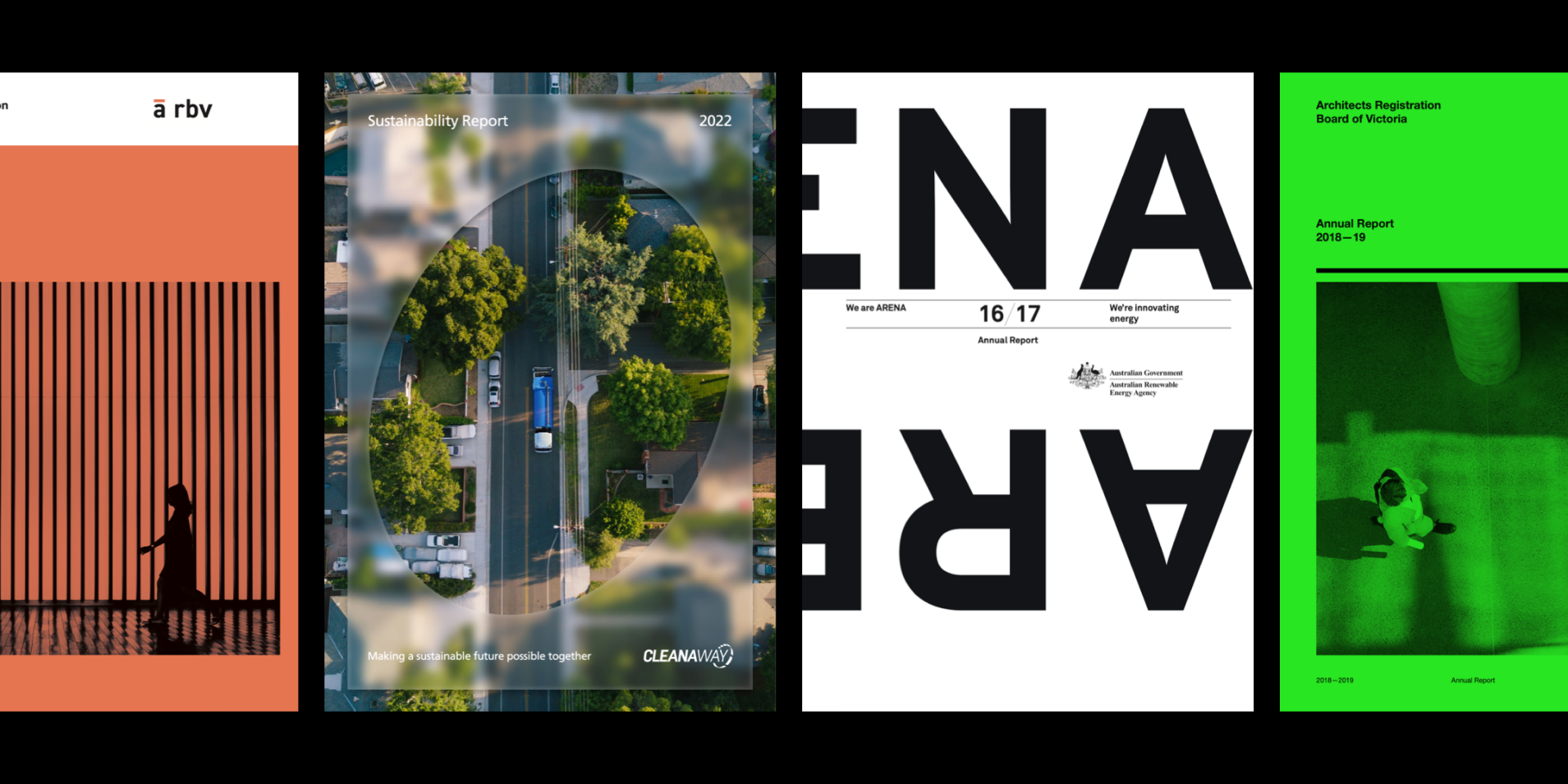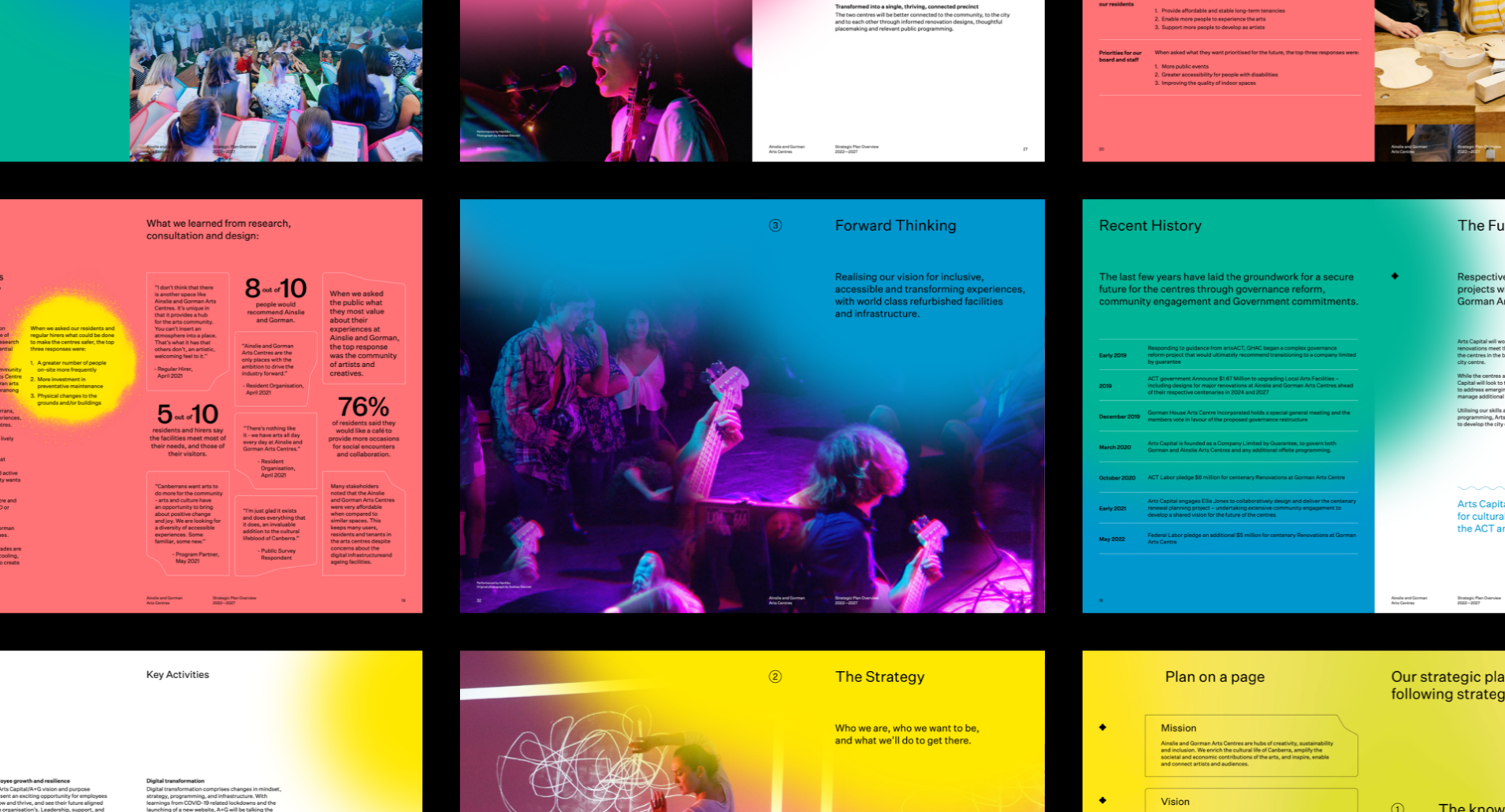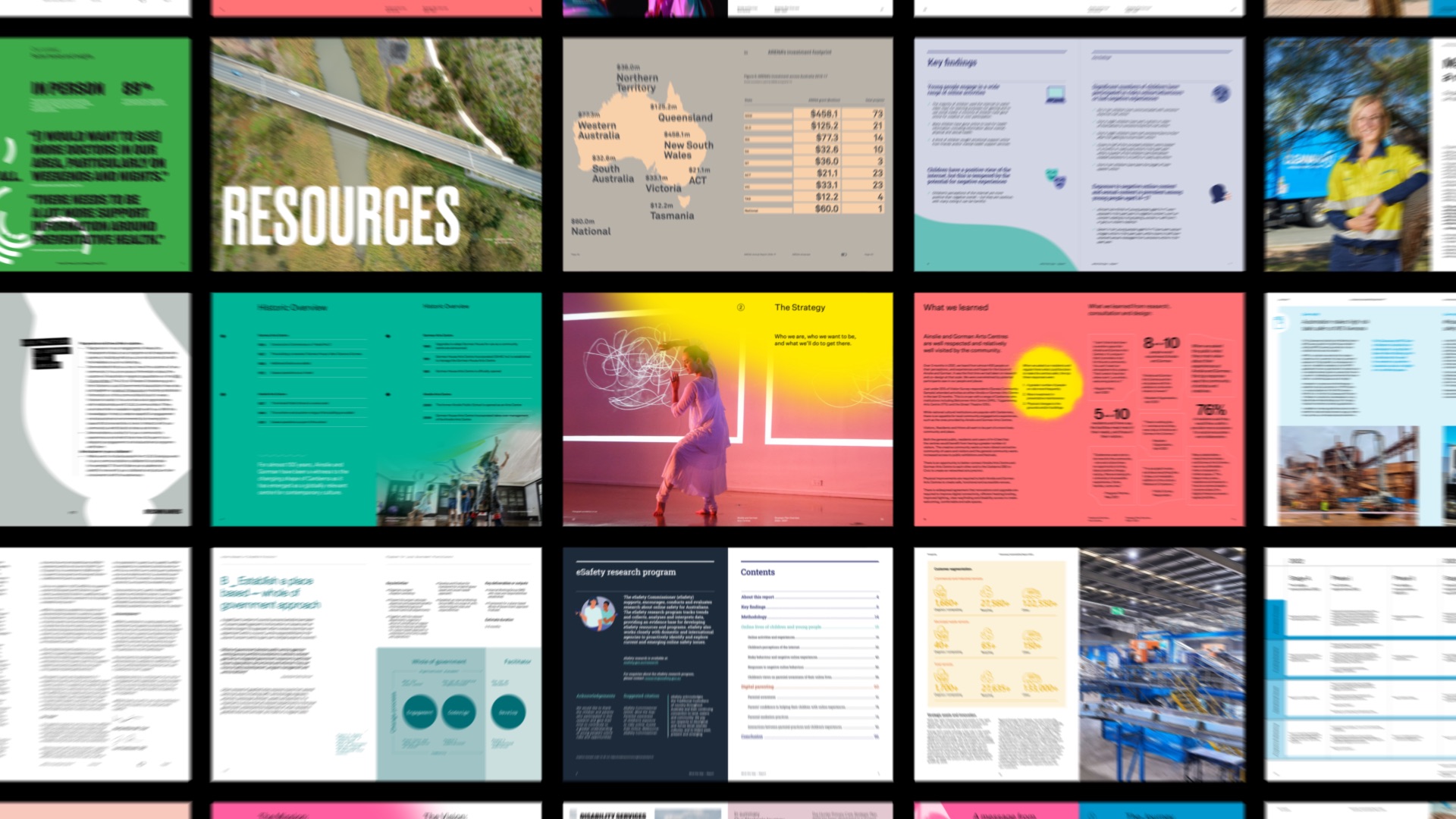
I took on my first annual report project 18 years ago. I managed the project, wrote and edited the text, and worked closely with a frazzled designer to lay it all out.
It was terrifying.
So much to pull together, with a clock ticking ever louder, every day. So many contributing stakeholders, many of them in powerful positions, sometimes in conflict with each other, all determined to see every one of their words in print.
And, with so many iterations, there were so many ways it could go wrong – right until the last proofread, on deadline, on the way to the printer, that was shutting in 15 minutes.
Would there be a grammatical error that outwitted Microsoft and Adobe? Would there be an image that remained inconsistent with the aesthetic tastes of a single stakeholder?
I mean, it’s amazing I went back for more. And more. And more.
So, what have I and my colleagues learned over many reports and a colourful spectrum of client experiences? It’s this: that, too often, the opportunity to communicate the strategic intent, to bring a novel, creative approach and execution, is challenged by the management process.
Annual reports are both a strategic and creative endeavour. Beyond compliance, that’s actually where the value is created in just about any kind of reporting.
So, to help you, and us, create reports that rival any architectural coffee table book, while motivating legions of customers and employees to get behind the vision and strategy, here are a few ways we prepare.
Motivate annual report teams with creativity and connection.
Creativity needs time, process, and a curious challenge to the status quo. It doesn’t mean tearing down time honoured practice.
On every annual report project, we get the key leaders and project team members in a workshop structured using design thinking, to address key questions such as:
- Who are we talking to? Target audience awareness, knowledge, and behaviour.
- What’s being done well, and how might we evolve it? Benchmarking against the leaders and disruptors.
- What’s the journey we are on? Vision of the contemporary and future state, seen from different perspectives.
- How do we explain the strategy though its progress and challenges? Strategy direction, the strategy activation arc, the risks to mitigate.
- What do we want people to see and feel? Identity, brand activation, tone, and cross-platform experience.
- How ambitious do we want to be? Awards, standards.
There will be more considerations, particularly if we are working on a sustainability report.
But, at this early stage, the focus is on strategy and creativity. On the experience we intend to leave customers, shareholders, employees, and stakeholders with.
There is another very important outcome at this stage: everyone in the workshop leaves motivated to take, and unite behind, a creative approach. They are focused on a vision of what the report and its communication, can create for the organisation – rather than the management process and their vested interests.

Extract maximum value from every word and every visual in the annual report.
Reporting is a significant investment. There’s not only the researching,writing and design time but the printing, digital expression, and the time of many internal and external contributors and reviewers.
To get a return, approach it as a strategic content creation endeavour. Ask the question, how can we make sure the content we produce has a life throughout the year, and a role in supporting the achievement of key business and marketing goals?
The best organisations work on a twelve-month plan of activity with opportunities to activate the strategy and tell the trust-building story – for different audiences, in different mediums, on different platforms/channels.
In addition, they think strategically and creatively about harnessing the evidence that will feature in the report throughout the year, going beyond materiality assessments and revenue/profit performance to engaging customers, employees, shareholders and stakeholders in research programs and collaborative activities.
With a wealth of visual, data and narrative content, annual report is ready to succeed when the kick-off meeting begins. Then the job of the writing and design teams is to share the company’s experience, through the perspectives of the people that matter to it, authentically and appropriately.
We have an old adage of ‘nine lives of content’. Finding ways to express, repurpose, and disseminate annual report content throughout the year. That’s a focus on value and impact.

Rock solid foundations: an annual report plan to accommodate the unforeseen; a team that knows their way around your space.
Assume the wheels will wobble, but not fall off. People will make late contributions; late requests from higher up will need to be addressed; at some point the time pressure will be felt.
Preparing for the unexpected is a key requirement for annual reports. You need a project plan that is tight and realistic – you also need a team that has an agile mindset. Things will change, it’s how you handle change together that decides the outcome.
On your team, you need ownership of project management by people who have both a natural talent for fostering relationships and a passion for administering complex projects. It’s not enough to be good at one but not the other – it’s the combination of attention to detail, calm under pressure, and measured enthusiasm that makes all the difference. A great project manager sets some ground rules early on, and de-escalates any tension, fairly and reasonably, supported by project leads.
They are rare and beautiful; and, we are extremely fortunate to have them on our team.
At their disposal, is a trusted process and contemporary project management technology.
Effective project management represents not only rigorous process and quality control (and peace of mind) but delivers the space for the rest of the team to be strategic and creative.
On the team (client and agency side) you must also have people with knowledge of the law, best practice, the industry, emergent reporting practice, and the audience.
Reporting is also rapidly evolving, as organisations of all kinds seek to actively articulate their impact beyond compliance, and beyond their P&L statements.
That demands being across why changes are being made and the relative obligations to adopt new standards.
The Corporations Act 2001 (Cth) (Act) sets out statutory requirements for financial reporting and the AICD has good guidance on how to respond. However, on 26 June this year, the International Sustainability Standards Board (ISSB) released its highly anticipated sustainability-related disclosures. The standards establish a common language for disclosing the effect of climate-related risks and opportunities on a company, with the intention that trust and confidence in company disclosures about sustainability will improve.
Why is this important? Greenwashing for one (note ASIC’s interest). But also to enable investors to find and support the companies playing their part in addressing climate change. And, so that companies can be confident communicating their achievements, motivating others to make the same changes.
The Australian Accounting Standards Board has not adopted the ISSB standards, but it has signalled that it will, in part, while urging companies to consider all of them.
You may have heard a bit about ESG (environmental, social, governance) reporting? This is not a requirement. But it is increasingly seen as an expectation of shareholders. We also see it as an innovation driver. Frame for ESG; innovate to achieve specific areas of value.
Ellis Jones has three overarching domains we work within: health, disability, and ageing; energy, environment, and the circular economy; and community, arts and culture. We participate in those sectors, and we can source trustworthy reflections from experts and people with lived experience at any time. This optimises the product through the addition of endorsed commentary, supporting evidence and authentic content, in word and image.
A few examples of annual reports that have made their mark.
We have many examples of annual reports on our website – have a look for some inspiration!
Here are a few to get you going:
- Cleanaway sustainability report. Placing circularity and impact at the core of Australia’s leading waste management company’s sustainability reporting.
- ARENA annual report. Setting new standards in award-winning government agency reporting.
- ARBV annual reports. Signalling intent for Victoria’s model regulator of the built environment.
Plus, we take the same strategic and creative approach with other documentation such as strategic plans, blueprints, and toolkits:
- Waterways of the West community engagement toolkit – empowering communities to connect and address precious waterways, productively.
- National Mental Health Commission, Blueprint for Mentally Healthy Workplaces. Establishing an accessible central point, and standards, for Australia’s to improve worker mental health.
- Hunter Primary Care strategic plan. Supporting a primary health care provider on their strategic journey so they could better understand, evidence and address community needs.
Talk to us about taking a strategic and creative approach to annual reports.
Our multidisciplinary team can share what they know, how they work, and the passion they bring to every project.


